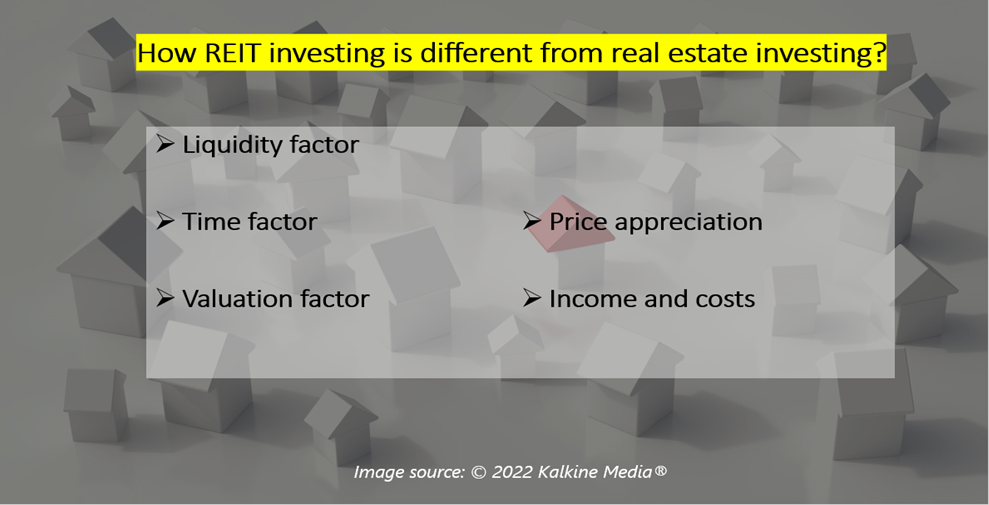Highlights
- The real estate market can be rewarding if investment strategies are correctly implemented.
- Like stocks, units of a REIT are traded on stock markets.
- REITs have expanded real estate investing beyond actual properties.
The real estate market can be rewarding if investment strategies are correctly implemented. Today, people do not necessarily have to buy homes or multiple properties across the city or country to be real estate investors. They can still have exposure to the real estate market by investing in Real Estate Investment Trusts (REITs).
REITs are increasingly becoming popular as these have expanded real estate investing beyond actual properties and have some unique characteristics. So, let us briefly know what REITs are before jumping into how these two are different from each other.
What are REITs?
REITs are publicly listed entity that owns and operates a portfolio of real estate properties, including commercial and residential assets.
Like stocks, units of a REIT are traded on stock markets, providing real estate exposure to all kinds of investors. These trusts tend to pay steady dividends to their unitholders. REITs technically have opened the door for small investors to benefit from the real estate market without raising lumpsum mortgages.
Also read: 8 reasons why you can save your retirement income in TFSA
Now, let us five key differences between real estate and REIT investing.
1. Liquidity factor
Most investors borrow money to purchase homes or other properties as these are capital intensive and periodically pay off a portion of the debt. And even after completely paying off debt, investors generally consider selling the property if its value has appreciated considerably. The paperwork involved in buying and selling properties is also cumbersome and lengthy.
On the other hand, REIT investing is far more liquid and simpler than investing in real properties as these are listed and traded publicly on the stock markets.
2. Time factor
Investments in real estate assets are typically locked in for the long term as value appreciation may take time. In contrast, REIT unit prices can change or fluctuate as stock prices do. Hence, it's totally at the judgement of investors when they want to change buy/sell position in the case of REITs. In simple words, investors can explore REITs for both short-term and long-term horizons.
3. Valuation factor
Valuation of the property depends on its location, quality, and reputation of the builder or owner. Property prices in metro areas or urban cities are likely to offer more stability than in any rural area during market downturns.
REITs can be evaluated based on their net asset value (NAV) and price-to-funds from operations (FFO) ratio.
4. Price appreciation
Buying a quality property can provide massive capital appreciation in the long run. However, investors need to study various key factors like infrastructure etc., that could increase or even decrease in value of the property.
REITs can deliver notable returns in some cases, like if they are bought at discounted valuations. To select REITs that could significantly enhance returns in the future, investors can look for their FFO per unit and payout ratio.
5. Income and costs
There is no guarantee that you can surely generate income by buying real estate properties. Hence, it is important to make sure that the property is rentable and ensure its occupancy to earn rental income. Also, on the costs side of things, real estate investing involves property tax, maintenance fees, interest expenses, mortgage, and other costs, especially when you are in the flipping business.
Apart from dividend income, REITs can offer returns at a time of price rise. Although, there is no guarantee of profit here either.
Costs associated with REITs are much lesser (i.e, they may or may not involve commission) as you are just exploring a business that owns and manages a real estate portfolio. Hence, keeping you away from the headache of managing property.
Also read: How to handle a bearish phase in the market?




